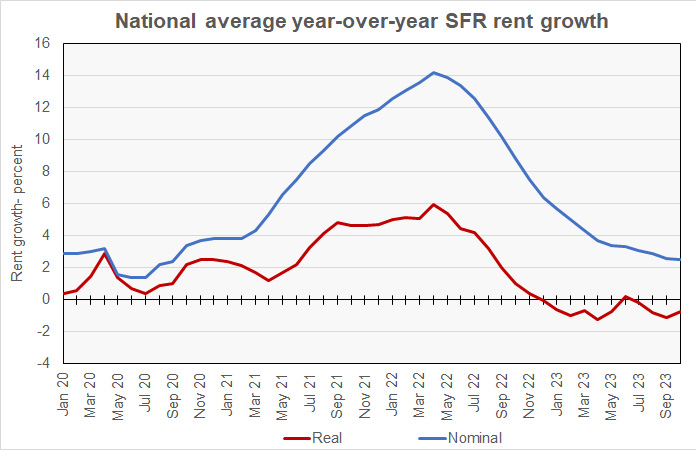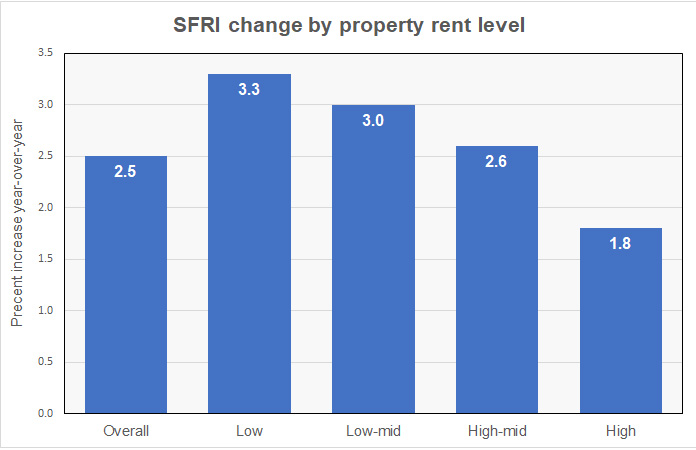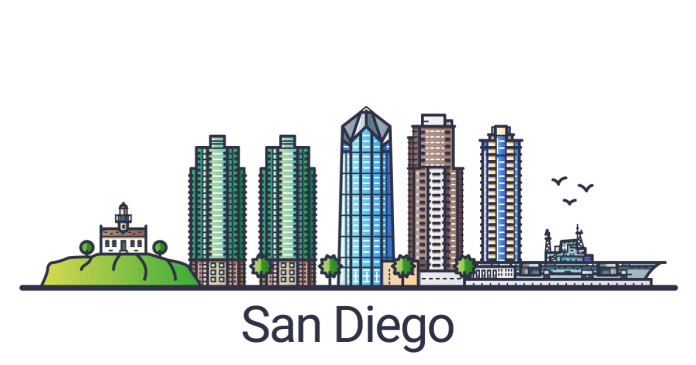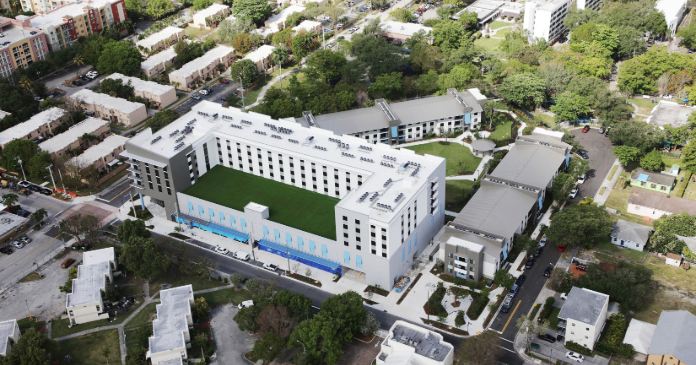CoreLogic reported that their single-family rent index (SFRI) for October rose 2.5 percent from its year-earlier level. This is down from the 2.6 percent year-over-year rent growth reported last month. October marks 18 months of declines in the rate of year-over-year rent growth.
Taking the long view
The history of the overall SFRI growth rate since January 2020 is shown in the first chart, below.

The chart shows both the nominal year-over-year SFR rent growth rate and also the real rate. The real rate is the year-over-year nominal rate less the year-over-year rate of inflation as measured by the unadjusted CPI-U. Because the highest rate of rent growth occurred during a time of high inflation, the real rent growth rate is well below the nominal rate during the high rent growth period. Recently, the real rent growth rate has turned negative as the rate of inflation outpaces the SFR rent growth rate.
For reference, Yardi Matrix found that single-family rent growth in October was 1.0 percent year-over-year as rents fell for the month. However, Yardi Matrix focuses on properties of 50 or more units while CoreLogic takes a broader look at the single-family rental market.
Tracking rates of growth
In addition to the overall SFRI, CoreLogic calculates SFR rent growth by the relative asking rent for the properties it covers. It divides the properties into 4 groups: those priced at 75 percent or less than the regional median (Low), those priced at 75 to 100 percent of regional median (Low-mid), those priced at 100 to 125 percent of regional median (High-mid) and those priced above 125 percent of regional median (High). The results for October 2023 are shown in the next chart, below.

The chart shows that the average SFR rent growth in the lowest tier is over 80 percent higher than that in the highest tier.
Looking at metros
CoreLogic reports the year-over-year rate of growth in the SFRI for a select group of metropolitan areas. San Diego replaced St. Louis in the top position for highest rent growth rate this month. It recorded SFR rent growth of 5.2 percent, down from 6.0 percent last month. St Louis fell to second place as its rent growth rate dropped from 6.8 percent last month to 5.0 percent. New York (4.7 percent) moved into third place while Boston (4.7 percent) and urban Honolulu (4.2 percent) rounded out the top 5 metros.
Two metros saw SFR rents decline October. The metros are Austin (-2.1 percent) and Miami (-1.0 percent). Phoenix (0.0 percent), Las Vegas (0.2 percent) and Atlanta (1.0 percent) filled out the five metros with the lowest rent growth rates.
CoreLogic is a data and analytics company. It calculates the SFRI using “a repeat pairing methodology to single-family rental listing data in the Multiple Listing Service.” The CoreLogic report is available here.













